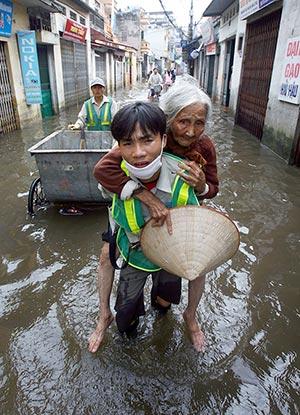Our Blog
Featured Blogs
14 September 2015
Insuring crops against unforeseen weather events is a standard practice among farmers in rich countries. Traditional insurance is either unavailable or is very expensive in many developing countries, leaving small farmers particularly vulnerable. A severe drought, a devastating earthquake or another weather disaster can wipe out small farmers. Such uncertainties also make them more risk averse and less likely to invest in their farms. Since the traditional individual and group-based... Keep reading
06 May 2015
Floods in India and Pakistan, typhoons in the Philippines and the recent earthquake in Nepal have reminded city leaders of the urgent need to safeguard the lives of their people, protect costly infrastructure, and ensure services and businesses can continue after disaster strikes. The question is then, how do you assess the risks to your city, and make sure you can cover the costs of problems when they strike? Hard data are key, and hard choices need to be made. But, having got all the... Keep reading
13 March 2015
Every time I learn of another natural disaster – the people killed and injured, homes destroyed, livelihoods lost – I know we must act to reduce the tragic impact instead of waiting for the next disaster strikes. We have that chance with this year’s World Conference on Disaster Risk Reduction in Sendai, which seeks to finalize the successor to the Hyogo Framework for Action (HFA2) that guides policymakers and international stakeholders in managing disaster risk. The conference is an opportunity... Keep reading
12 March 2015
“What would it take to reduce disaster risk in your country by 50 percent by 2030?” This question was posed to a gathering of small island developing states leaders and representatives during the Understanding Risk forum in London in 2014. At the time, it probably seemed like an overwhelming question. Around US$650 million in international financing is currently available annually to build resilience in small states. However, for many countries, reducing their disaster risk by 50 percent is an... Keep reading
08 October 2014
This week, the Resilience Dialogue , bringing together representatives from developing countries, donor agencies and multilateral development banks, will focus on financing to build resilience to natural disasters. There is growing recognition that resilience is critical to preserving hard won development gains. The share of development assistance supporting resilience has grown dramatically in recent years. New instruments have emerged in particular to help client countries deal with the... Keep reading
20 December 2013
Yesterday at the Global Platform for Disaster Risk Reduction , ODI , together with partners at the Global Facility for Disaster Reduction and Recovery , released the very latest figures on financing for disaster risk management . Overall, the figures are depressing enough and must warn us against complacency, especially if we believe that increased rhetoric about disaster risk is matched by increased funding – the evidence suggests otherwise. Financing for disasters is not a priority for the... Keep reading









